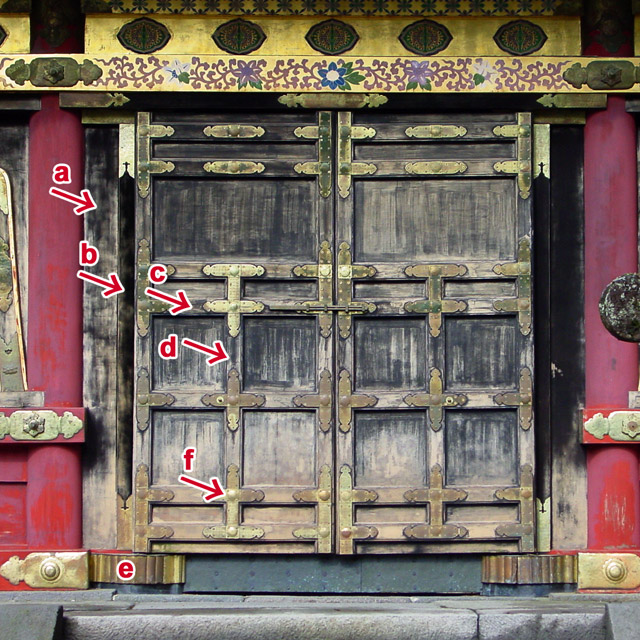| Also
read sankarado. Paneled entrance doors introduced from China in the
13c-14c. They are associated with the Zen and daibutsu styles *zenshuuyou
禅宗様 and *daibutsuyou
大仏様. The doors are hung by pivot hinges *jikuzuri
軸吊 attached to protruding sockets at the top and bottom of the door. The
panels are set into a frame composed of horizontal crosspieces or rails
san 桟 and vertical mullions *tatezan
竪桟. The size and direction of the panels vary according to the aesthetic
effect desired. Often the uppermost sections are filled with vertical lattice
*renji 連子, diagonally
set lattice, or other decoration including the crest of a high ranking family.
In the Momoyama period (1568-1615), the panel spaces were filled with elaborate
sculpture set in relief. Sangarado are usually double doors but occasionally
each door is constructed as a two section folding door. Examples: Zuiganji
main hall, Zuiganji Hondou 瑞巌寺本堂 (1610), in Miyagi prefecture. |



